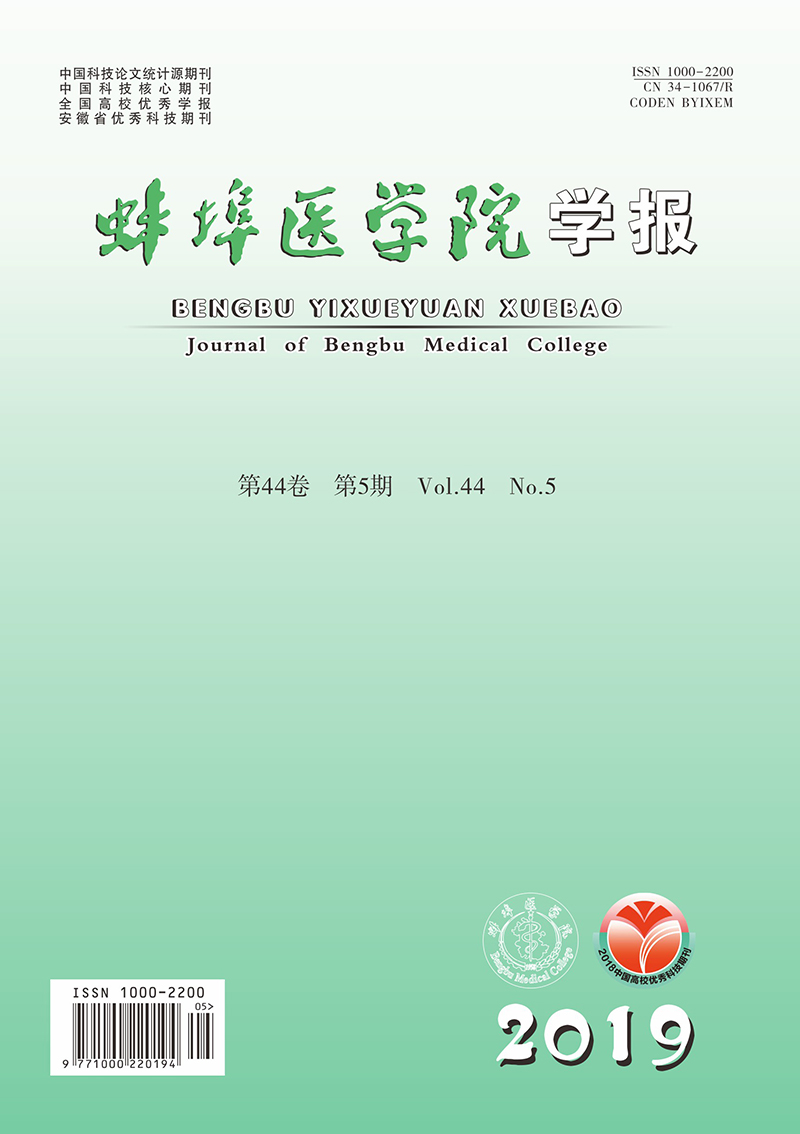-
脑梗死是成人最常见的致死疾病,急性缺血性脑梗死占脑梗死的1/3~1/4,积极治疗急性缺血性脑梗死对改善病人预后、降低死亡率具有重要意义[1]。早期及时对急性脑梗死病人进行溶栓治疗可以使阻塞的脑血管再通、脑组织局部血液灌流恢复、梗死体积减少、神经功能缺损改善,是唯一有效的治疗急性脑梗死的手段[2]。重组组织型纤溶酶原激活剂(recombinant tissue-type plasminogen activator,r-tPA)是美国FDA唯一认可的早期溶栓治疗急性缺血性脑梗死的药物,其静脉使用的安全有效的时间为急性缺血性脑梗死后4.5 h内[3-5],r-tPA对急性缺血性脑梗死4.5 h后的超时间窗病人的治疗效果尚需进一步研究。本文对血栓性大脑中动脉栓塞大鼠r-tPA超时间窗静脉溶栓的治疗效果进行研究,旨在为临床提供依据。
HTML
-
实验动物:清洁级、健康、8~10周龄、体质量310~360 g、成年SD大鼠80只,购自北京科学院微生物研究所,许可证号:SYXK(京)2014-0032。主要试剂:r-tPA(德国柏林格殷格汉制药有限公司),2, 3, 5-氯化三苯基四氮唑(TTC)、兔抗大鼠CD34抗体、免疫组织化学试剂盒(美国Sigma公司),自由基活性检测试剂盒(南京建成生物工程研究所)等。
-
将80只大鼠根据随机数字法分为对照组、脑梗死组、4.5 h溶栓组和6 h溶栓组,每组20只。对照组进行假手术处理,脑梗死组、4.5 h溶栓组和6 h溶栓组大鼠均建立大脑中动脉栓塞模型,4.5 h溶栓组和6 h溶栓组大鼠建模后分别于4.5 h、6 h给予r-tPA静脉泵入处理,每组大鼠分为2个小组,分别于建模后3 d和7 d处死大鼠备用。对照组无大鼠死亡,模型组大鼠死亡2只,存活大鼠均建模成功;4.5 h溶栓组和6 h溶栓组大鼠各死亡2只、3只,建模失败2只、1只。死亡和建模失败大鼠均剃除。
-
将大鼠深度麻醉成功后固定到手术台上,行颈正中切口,分离皮下组织、肌肉、筋膜,找到颈总动脉,暴露颈总动脉、颈外动脉和颈内动脉,结扎颈外动脉远心端,颈外动脉近心端打活结,分离颈内动脉,结扎翼腭动脉分叉处,动脉夹夹闭颈总动脉和颈内动脉,在颈外动脉结扎线近心端剪“V”型切口,PE50管从远心端向近心端插入,PE50管头端位于颈总动脉分叉处时固定PE50管,松开颈内动脉夹并调整PE50管头端位置,见到回血后推入12个血栓,拔出PE管并拉紧活结,松开颈总动脉的动脉夹,逐层缝合伤口。
-
大鼠麻醉成功后固定手术台上,沿股静脉切开皮肤、暴露股静脉、穿刺股静脉,首次注入10%r-tPA(10 mg/kg),余下r-tPA 30 min内泵入。
-
(1) 脑梗死体积测定:将大鼠大脑部分放冰箱冷冻半小时,放入鼠脑槽中切成2 mm薄片,将其放入TTC溶液中孵育半小时,脑梗死区域不染色(灰白色),正常脑组织染为深红色,将脑片放入甲醛中固定,拍照,输入计算机计算各脑片正常组织面积和梗死面积,计算脑梗死体积百分比。(2)微血管密度测定:将脑组织沿冠状位切为2 mm厚脑片,固定48 h后脱水、石蜡包埋,切除3 μm厚切片,对其进行常规二步法免疫组织化学染色,以兔抗大鼠CD34抗体作为一抗,DAB显色、苏木精复染后在400倍电子显微镜下计数微血管密度,以5个视野的缺血半暗带区微血管数目平均值作为微血管密度。(3)皮层脑组织一氧化氮(nitric oxide,NO)含量、脂质过氧化物丙二醛(malondialdehyde,MDA)含量、超氧化物歧化酶(superoxide dismutase,SOD)活性测定:将脑梗死侧大脑皮层称重后以0.9%氯化钠溶液做匀浆介质研磨成组织匀浆,以2 500 r/min离心15 min后取上清液,按照自由基活性检测试剂盒说明书测定皮层脑组织NO含量、MDA含量、SOD活性。
-
采用t检验、方差分析和q检验。
1.1. 材料
1.2. 实验方法
1.2.1. 动物分组
1.2.2. 大脑中动脉栓塞模型制备
1.2.3. 溶栓治疗
1.3. 检测指标
1.4. 统计学方法
-
4.5 h溶栓组和6 h溶栓组3 d及7 d脑梗死体积均显著低于脑梗死组(P < 0.01),6 h溶栓组3 d及7 d脑梗死体积与4.5 h溶栓组差异无统计学意义(P>0.05)。各组内3 d和7 d的脑梗死体积差异均无统计学意义(P>0.05)(见表 1)。
分组 n 3 d 7 d t P 脑梗死组 9 92.14±11.36 94.52±12.17 0.43 >0.05 4.5 h溶栓组 8 64.67±7.83** 72.47±10.36** 1.70 >0.05 6 h溶栓组 8 67.54±8.92** 75.35±9.78** 1.67 >0.05 F — 21.46 10.47 — — P — <0.01 <0.01 — — MS组内 — 91.751 118.442 — — q检验:与脑梗死组比较**P < 0.01 -
4.5 h溶栓组和6 h溶栓组3 d及7 d脑微血管密度均显著高于脑梗死组(P < 0.01),6 h溶栓组3 d及7 d脑微血管密度均低于4.5 h溶栓组(P < 0.05)。4.5 h和6 h溶栓组的7 d脑微血管密度均显著高于3 d脑微血管密度(P < 0.01)(见表 2)。
分组 n 3 d 7 d t P 脑梗死组 9 13.24±1.43 14.37±1.26 1.78 >0.05 4.5 h溶栓组 8 24.58±1.87** 29.73±2.02**▲▲ 5.29 < 0.01 6 h溶栓组 8 22.53±1.92**# 27.38±1.78**#▲▲ 5.24 < 0.01 F — 103.93 204.78 — — P — <0.01 <0.01 — — MS组内 — 3.029 2.884 — — q检验:与脑梗死组比较**P < 0.01;与4.5 h溶栓组比较#P < 0.05;组内与3 d比较▲▲P < 0.01 -
对照组组、4.5 h溶栓组、6 h溶栓组大鼠3 d和7 d皮层脑组织NO含量、MDA含量均显著低于脑梗死组,SOD活性显著高于脑梗死组(P < 0.05~P < 0.01);6 h溶栓组3 d和7 d皮层脑组织MDA含量高于4.5 h溶栓组(P < 0.05~P < 0.01),6 h溶栓组3 d和7 d皮层脑组织SOD含量低于4.5 h溶栓组(P < 0.05);4.5 h溶栓组和6 h溶栓组大鼠7 d皮层脑组织NO含量高于3 d NO含量(P < 0.05),4.5 h溶栓组和6 h溶栓组大鼠3 d和7 d皮层脑组织MDA含量、SOD活性比较差异无统计学意义(P>0.05)(见表 3)。
分组 n NO含量/(μmol/mgprot) MDA含量/(nmol/mgprot) SOD活性/(U/mgprot) 3 d 7 d 3 d 7 d 3 d 7 d 对照组 10 0.62±0.11** 0.65±0.13** 4.72±0.48** 4.83±0.52** 142.15±25.36** 144.35±23.14** 脑梗死组 9 1.68±0.23 1.95±0.21▲ 24.35±11.28 27.52±12.47 93.24±21.54 95.47±22.31 4.5 h溶栓组 8 1.12±0.16** 1.34±0.19**▲ 13.27±5.38* 17.46±5.83** 118.79±20.98* 121.42±18.79* 6 h溶栓组 8 1.22±0.24** 1.42±0.23**▲ 14.43±6.02*# 19.78±6.31**# 115.46±19.83*# 117.38±19.03*# F — 49.90 74.61 12.82 14.89 7.69 8.54 P — <0.01 <0.01 <0.01 <0.01 <0.01 <0.01 MS组内 — 0.036 0.036 47.622 56.873 494.634 445.402 q检验:与脑梗死组比较*P < 0.05,**P < 0.01;与4.5 h溶栓组比较#P < 0.05,##P < 0.01;组内与3 d比较▲P < 0.05
2.1. 各组大鼠脑梗死体积比较
2.2. 各组大鼠脑微血管密度比较
2.3. 各组大鼠皮层脑组织NO含量、MDA含量、SOD活性比较
-
缺血半暗带是指组织缺血丧失电生理活动,但尚能维持自身电位和跨膜电位,尚可存活一段时间的脑组织,这部分脑组织结构完整,如果及时恢复这部分脑组织血流量,及时恢复脑组织的供氧功能,则这部分脑组织可逆转为结构功能正常的脑组织。这部分脑组织处于动态变化过程中,外界干预可影响其转归,如果及时恢复血液功能则可转化为正常脑组织,如果持续缺氧,则可引起组织结构不可逆变化,转化为脑梗死组织[6-7]。本研究对血栓性大脑中动脉栓塞大鼠给予不同时间窗静脉溶栓治疗,结果发现,4.5 h和6 h溶栓组大鼠脑梗死体积明显低于脑梗死组,4.5 h溶栓组大鼠脑梗死体积最小。脑梗死后4.5~6 h脑梗死灶周围仍保留部分缺血半暗带,而这部分缺血半暗带的血供未完全丧失,r-tPA可激活血栓纤溶途径溶解血栓;低灌注区血流缓慢,血液处于高凝状态,容易引起微循环障碍,r-tPA通过侧支循环改善低灌注区的血供,微循环的改善可使该区域脑组织保持结构完整,从而减少梗死灶体积[8]。研究结果显示,6 h超时间窗溶栓对血栓性大脑中动脉栓塞大鼠具有一定治疗效果,但其治疗效果不及4.5 h溶栓组。
脑组织缺氧后可促进角质细胞增生,并分泌血管内皮生长因子,而血管内皮生长因子和血管的分化、增生有关,巨噬细胞活化也与血管内皮生长因子分泌有关,脑梗死周围区域处于低灌注状态,局部组织供氧不足,组织缺氧刺激新生血管的生成[9-11]。本研究对各组大鼠微血管密度进行比较,结果发现,4.5 h溶栓组和6 h溶栓组3 d及7 d脑血管密度均明显高于脑梗死组,6 h溶栓组3 d及7 d脑血管密度低于4.5 h溶栓组。可见,4.5 h溶栓和6 h溶栓治疗可促进新生血冠形成,而4.5 h时间窗治疗更有助于重建残存血管网,与脑血管梗死面积结果对应,建立侧支循环,改善局部血供,挽救部分残余半暗带,从而减少脑梗死体积。
在脑缺血再灌注损伤和脑缺血中,氧化应激反应是加重脑损伤的机制之一,脑缺血再灌注和脑缺血可引起自由基增加,而其病理生理反应的关键因素为NO的生物合成,NO是一种活性很强的自由基,在中枢神经系统中参与细胞保护和信息传递的作用,但NO产生过多可引起神经元细胞的破坏[12-13]。脑缺血再灌注和脑缺血可引起脂质过氧化,MDA具有强烈的生物毒性,是脂质过氧化降解产物,MDA具有氧化功能,对脑组织神经元具有损伤作用[14-15]。SOD由蛋白质和金属离子组成,在微生物和动植物中广泛存在,是脑组织重要的抗氧化酶,SOD可消除脑细胞内过多的自由基,从而发挥脑保护作用[16]。本文对各组大鼠皮层脑组织NO含量、MDA含量、SOD活性进行研究,结果发现,对照组、4.5 h溶栓组、6 h溶栓组大鼠3 d和7 d皮层脑组织NO含量和MDA含量均低于脑梗死组,且SOD活性均高于脑梗死组。可见,6 h和4.5 h溶栓治疗均可降低脑梗死大鼠皮层脑组织NO含量和MDA含量,提高SOD活性,考虑超时间溶栓治疗可减少脑梗死体积的机制可能与超时间溶栓治疗可降低脑梗死大鼠皮层脑组织NO含量和MDA含量有关。






 DownLoad:
DownLoad: